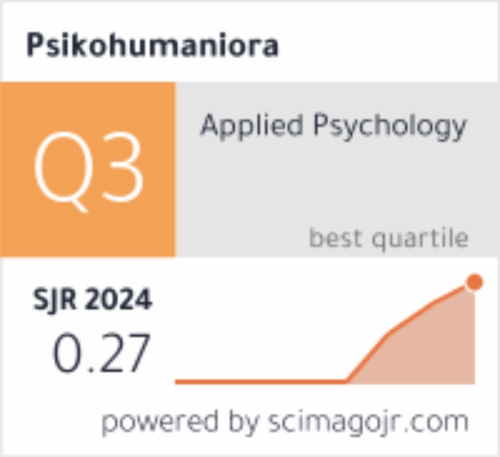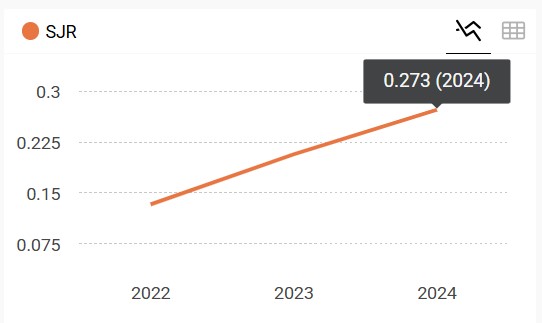The effect of flexible work arrangements on ethical decision-making
DOI:
https://doi.org/10.21580/pjpp.v5i2.4279Keywords:
flexible work arrangements, ethical decision-makingAbstract
This study aimed to compare the impact of different types of flexible work arrangements (flextime and telecommuting) on ethical decision-making. Ethical decision-making is when individuals use their moral basis to determine what is right and wrong in a given situation. It involves an awareness of moral dilemmas and consideration of the consequences of decisions. Flexible work arrangements are offered to promote individuals’ ethical decision-making by balancing their needs at work and outside work, such as spending time with family. This research was conducted on 185 employees and used a quantitative approach that utilizes experimental methods with a post-test-only design. Employees’ ethical decision-making was measured using two vignettes. Data analysis was conducted using the independent sample t-test parametric statistical technique. The study results indicated a t = 4.21 and a significance level of .00 (p < .05), which showed that this study's working hypothesis was acceptable. It concluded that there were differences in ethical decision-making between two types of flexible work arrangements: flextime and telecommuting groups.
Downloads
References
Allen, T. D., Golden, T. D., & Shockley, K. M. (2015). How effective is telecommuting? Assessing the status of our scientific findings. Psychological Science in the Public Interest, 16(2), 40–68. https://doi.org/10.1177/1529100615593273
Bazerman, M. H., & Sezer, O. (2016). Bounded awareness: Implications for ethical decision making. Organizational Behavior and Human Decision Processes, 136, 95–105. https://doi.org/10.1016/j.obhdp.2015.11.004
Cameron, K. S., & Quinn, R. E. (2001). Diagnosing and changing organizational culture: Based on the competing values framework. Jossey-Bass.
Carlson, D. S., Kacmar, K. M., & Wadsworth, L. L. (2009). The impact of moral intensity dimensions on ethical decision-making: Assessing the relevance of orientation. Journal of Managerial Issues, 21(4), 15–30.
Choi, Y. S., & Scott, D. K. (2008). Assessing organisational culture using the competing values framework within American Triple-A baseball. International Journal of Sport Management and Marketing, 4(1), 33–48. https://doi.org/10.1504/IJSMM.2008.017657
Evans, J. R., & Mathur, A. (2005). The value of online surveys. Internet Research, 15(2), 195–219. https://doi.org/10.1108/10662240510590360
Golden, T. D., & Gajendran, R. S. (2019). Unpacking the role of a telecommuter’s job in their performance: Examining job complexity, problem solving, interdependence, and social support. Journal of Business and Psychology, 34(1), 55–69. https://doi.org/10.1007/s10869-018-9530-4
Hartnell, C. A., Ou, A. Y., & Kinicki, A. (2011). Organizational culture and organizational effectiveness: A meta-analytic investigation of the competing values framework’s theoretical suppositions. Journal of Applied Psychology, 96(4), 677–694. https://doi.org/10.1037/a0021987
Jones, T. M. (1991). Ethical decision making by individuals in organizations: An issue-contingent model. Academy of Management Review, 16(2), 366–395. https://doi.org/10.5465/amr.1991.4278958
Kung, F. Y. H., Kwok, N., & Brown, D. J. (2018). Are attention check questions a threat to scale validity? Applied Psychology, 67(2), 264–283. https://doi.org/10.1111/apps.12108
Lim, V. K. G., & Teo, T. S. H. (2000). To work or not to work at home: An empirical investigation of factors affecting attitudes towards teleworking. Journal of Managerial Psychology, 15(6), 560–586. https://doi.org/10.1108/02683940010373392
Lincoln, S. H., & Holmes, E. K. (2010). The psychology of making ethical decisions: What affects the decision? Psychological Services, 7(2), 57–64. https://doi.org/10.1037/a0018710
Linehan, M., & Walsh, J. S. (2000). Work-family conflict and the senior female international manager. British Journal of Management, 11(s1), S49–S58. https://doi.org/10.1111/1467-8551.11.s1.5
Magnus, J. R. M., & Viswesvaran, C. (2006). How family-friendly work environments affect work/family conflict: A meta-analytic examination. Journal of Labor Research, 27(4), 555–574. https://doi.org/10.1007/s12122-006-1020-1
Mohanty, A., Dash, M., Pattnaik, S., Das, J. R., & Misra, S. K. (2012). Study of organization culture and leadership behaviour in small and medium sized enterprises. European Journal of Scientific Research, 68(2), 258–267.
Musbah, A., Cowton, C. J., & Tyfa, D. (2016). The role of individual variables, organizational variables and moral intensity dimensions in Libyan management accountants’ ethical decision making. Journal of Business Ethics, 134(3), 335–358. https://doi.org/10.1007/s10551-014-2421-3
Nelson, D. L., & Quick, J. C. (2013). Organizational behavior: Science, the real world, and you. Boston: Cengage Learning.
Pedersen, V. B., & Lewis, S. (2012). Flexible friends? Flexible working time arrangements, blurred work-life boundaries and friendship. Work, Employment and Society, 26(3), 464–480. https://doi.org/10.1177/0950017012438571
Radcliffe, L. S., & Cassell, C. (2014). Resolving couples’ work-family conflicts: The complexity of decision making and the introduction of a new framework. Human Relations, 67(7), 793–819. https://doi.org/10.1177/0018726713506022
Rau, B. L., & Hyland, M. A. M. (2002). Role conflict and flexible work arrangements: The effects on applicant attraction. Personnel Psychology, 55(1), 111–136. https://doi.org/10.1111/j.1744-6570.2002.tb00105.x
Rest, J. R., & Barnett, R. (1986). Moral development: Advances in research and theory. Praeger.
Robbins, S. P., & Judge, T. A. (2017). Organizational behavior (17th ed.). Pearson.
Ryan, A. M., & Wessel, J. L. (2015). Implications of a changing workforce and workplace for justice perceptions and expectations. Human Resource Management Review, 25(2), 162–175. https://doi.org/10.1016/j.hrmr.2015.01.001
Sok, J., Blomme, R., & Tromp, D. (2014). Positive and negative spillover from work to home: The role of organizational culture and supportive arrangements. British Journal of Management, 25(3), 456–472. https://doi.org/10.1111/1467-8551.12058
Sparks, J. R., & Pan, Y. (2010). Ethical judgments in business ethics research: Definition, and research agenda. Journal of Business Ethics, 91(3), 405–418. https://doi.org/10.1007/s10551-009-0092-2
Spreitzer, G. M., Cameron, L., & Garrett, L. (2017). Alternative work arrangements: Two images of the new world of work. Annual Review of Organizational Psychology and Organizational Behavior, 4(1), 473–499. https://doi.org/10.1146/annurev-orgpsych-032516-113332
Thompson, R. J., Payne, S. C., & Taylor, A. B. (2015). Applicant attraction to flexible work arrangements: Separating the influence of flextime and flexplace. Journal of Occupational and Organizational Psychology, 88(4), 726–749. https://doi.org/10.1111/joop.12095
Trevino, Linda K., & Youngblood, S. A. (1990). Bad apples in bad barrels: A causal analysis of ethical decision-making behavior. Journal of Applied Psychology, 75(4), 378–385. https://doi.org/10.1037/0021-9010.75.4.378
Trevino, Linda Klebe. (1986). Ethical decision making in organizations: A person-situation interactionist model. Academy of Management Review, 11(3), 601–617. https://doi.org/10.5465/amr.1986.4306235
Wisesa, A. (2011). Integritas moral dalam konteks pengambilan keputusan etis. Jurnal Manajemen Teknologi, 10(1), 82–92.
Downloads
Published
How to Cite
Issue
Section
License
The copyright of the accepted article shall be assigned to the publisher of the journal. The intended copyright includes the right to publish the article in various forms (including reprints). The journal maintains the publishing rights to published articles.
In line with the license, authors and any users (readers and other researchers) are allowed to share and adapt the material only for non-commercial purposes. In addition, the material must be given appropriate credit, provided with a link to the license, and indicated if changes were made. If authors remix, transform, or build upon the material, authors must distribute their contributions under the same license as the original.



